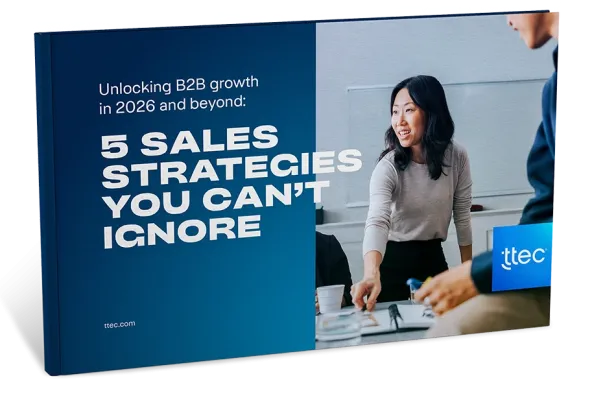oday’s customers don’t just want to consume products and services. They want experiences that over-deliver on their expectations and they are happy to recommend their favorite brands to others. And brands that encourage customer feedback, collaboration, and co-creation often reap impressive rewards. For example, 70 percent of companies that deliver best-in-class customer experience use customer feedback, according to research from customer experience analyst Esteban Kolsky.
Tapping into customer voices isn’t a new concept. The dawn of the internet age brought with it unique ways to listen to customers and understand their needs. The practice only grows as new channels emerge. In fact, 95 percent of companies say they regularly listen to their customers, according to CMO.com.
But in reality, valuable customer insight is not being used to advance the customer experience. Only 29 percent of companies with VOC systems in place actually use those insights as part of their decision making. Things are even worse in the marketing space, where VOC data is used only 11 percent of the time by Fortune 100 leaders to make decisions that affect customers, says a recent Harvard Business Review article.
Customers already generate valuable data and want to be part of a shared brand experience. How can companies leverage such a wealth of information to create experiences customers crave and live up to a brand’s promise?
Four ways to connect data to your brand
With more data being generated every day and new ways to analyze it to create insight, data analytics can be used to help improve brand perception and strength based on customers’ own behavior and preferences. We see four distinct areas of opportunity:
1. Really know your customers. The combination of traditional customer data sources (demographics, transaction history, profile information) with next-gen sources give companies a much deeper understanding of who their customers are. While the data may live in many places across your organization, it’s critical to pull together as much relevant data as possible to create a robust, holistic data set. This includes online and mobile behavior, unstructured voice and text data, VOC system data, and other emerging data that may come from wearables, the Internet of Things, and the like.
Remember that often what’s most valuable isn’t the answer to the specific questions you’ve asked, but the unstructured insight found in open-ended survey answers or conversation transcripts.
Example: Recently, a company initiated a large-scale outreach campaign about a product recall. Yet unstructured data analysis showed that a large number of the customers contacted were not owners of the product anymore. Further communications were needed to connect with second-generation owners with slightly different messaging.
2. Align your brand promise to your customer reality. In today’s fast-paced marketplace, sometimes the direction of the brand doesn’t always match the reality of that brand’s customers. Analytics can help understand the current profile of a brand’s customers to see how they align to the brand today, and if they can be part of the brand’s future. Some brands may aspire to attract a different type of customer than they have today. Yet a deep understanding of current customers can help marketers discover how to be relevant and bring them along as a brand evolves. What are common areas of behavior or interest among current and future customers that can be leveraged? Analytics can help fuel prospecting activities to match the future brand promise without alienating current customers.
Example: Cadillac is in the midst of a transformation to reach younger customers. Its CMO says the luxury car’s branding is more “entrepreneurial, fashion-forward and art-focused” to entice younger, affluent customers. That positioning may also keep older, more traditional customers interested in the brand, as well.
3. Use research and create a dialogue with customers. Market research, surveys, focus groups, and other primary research tools are well known to marketers when working on brand strategy. There will be specific things you will need to know about brand perception and preferences before making brand decisions. Invite customers to participate in these activities to fill in insight gaps and keep research dynamic. Whether it’s research panels, customer communities, or influencer outreach, complement primary market research with actual customer voices to gain even more insight than before. Of particular note are investigations into what motivates customers to act in a positive way about your brand, along with what barriers may prevent them from doing so.
Example: A retailer struggled to quantify the ROI of a product-specific loyalty program. Traditional test versus control data was not available, because the program was universally offered. Research was conducted with customers following product purchases to ask the question, “would you have purchased this item in absence of the loyalty program?” The answers supported the business case for the program. Even better was analysis of the open-ended text provided about problems and desired benefits, which helped improve the program’s value proposition.
4. Understand the entirety of the customer experience. The customer journey has both negative “pain points” to be fixed and positive “moments of truth” that can be optimized to impact satisfaction and loyalty. More and more, companies are mapping the customer journey to understand where those areas of opportunity exist.
However, it’s not enough just to map the journey. Analysis of each of those moments is needed to determine the right actions necessary to improve the experience at those specific points, as well as how to prioritize investment to make the most impactful decisions. Customer journey analytics can help tie NPS, brand perception, and other customer metrics to actual financial outcomes like sales and profitability. Historical analysis can help companies develop forecasts of future growth based on customer journey enhancement. Yet it can be difficult, since many of the outcomes may not appear quickly. The financial impact of customer experience efforts can take one to three years to see results.
Example: An online service company was looking for a way to utilize contact center associates to improve the customer experience and also generate revenue. Through a journey mapping exercise, several pain points in the customer service process and missed revenue opportunities were identified. Too many, in fact, to implement. Using analytics to create a rigorous business case for each modification to the journey was the only way to establish prioritization. The output enabled quantification of the impact to NPS and customer retention for each proposed initiative.
These four steps will help set your company on a journey to better understand what customers are already telling you, both directly and indirectly. This should be used to inform decisions about your products, services, messaging, and company culture. All of these roll up into the brand positioning, which is a dynamic entity. Consistent, continuous customer insight will keep the brand fresh and relevant.















